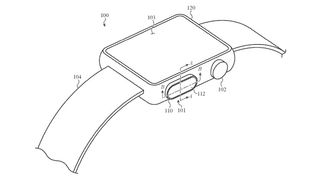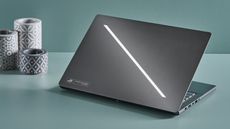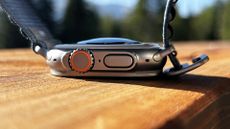Last week Apple CEO Tim Cook hinted at “mind-blowing” future features for the Apple Watch. New patent applications show what those features might be. In addition to Touch ID, a future Apple Watch could also have a camera that’s located under the display. That could also mean the end of the iPhone's famous notch in the iPhone 13.
The patents were found by Patently Apple and AppleInsider respectively. The first patent, Electronic Device Having Sealed Button Biometric Sensing System, describes how Apple might implement a Touch ID sensor into the side button of the Apple Watch – much like it has with the sleep/wake button of the iPad Air (2020).
- Apple AirPods 3 will be AirPods Pro but cheaper, with no noise cancelling
- OnePlus' Apple Watch rival has been officially confirmed by CEO
- PSVR 2 video: Heart-stopping PlayStation XR headset is the ultimate PS5 accessory
It may be a little button but it could make a big difference: at the moment, if you want to secure your Apple Watch and use it for services such as Apple Pay you need to unlock it with a passcode, which is quite annoying. Biometric identification is more secure, and it’s instant – so those of us who don’t bother locking our Apple Watch because PINs are a pain are much more likely to use it.

Apple Watch camera: now you see it, now you don't
The second patent application is even more interesting, because it could apply to more than just the Apple Watch. The patent, Electronic Devices With Two-Stage Displays, describes a method of layering that puts a camera and a flash inside a device’s display.
It’s clever stuff. According to the patent, the camera and flash would be covered by light modulating cells that can be switched from opaque to transparent. When the camera is needed they become a window; when it isn’t, they go back to being opaque and the camera completely disappears. That could happen in response to the display’s touch sensor: press to take a photo and the area in front of the camera and flash turns transparent just long enough to take the shot.
The patent doesn’t just talk about a single camera and flash; the light modulating cells could also cover “other optical components”, such as the depth sensor in the iPhone 12 and iPhone 12 Pro. That means the same tech could replace the current iPhones’ divisive notch.
Dual-layer displays: the best of both worlds
Layered displays also open up some really interesting possibilities. The patent describes how different layers could have different characteristics, so for example you might have one relatively slow, low-powered layer and a faster, more energy-hungry layer.
That could make a huge difference to battery life. It’s a technique we’ve already seen in processors and in graphics: many mobile devices have a mix of low power and high performance cores that they use as required, and some laptops have modest integrated graphics for displaying apps and high performance graphics cards for the fun stuff.
If Apple can apply the same principles to its displays it could use the low-energy display for static information such as the date, app complications, watch faces and so on, and then switch to the high performance layer when it's showing now information such as notifications.
As Tim Cook might put it, that’s pretty mind-blowing.











